Microgreens - how to grow crops, benefits and harms
Categories: Food and Drinks | Health and Medicine | Healthy lifestyle
PictolicMicrogreens, or as it is now fashionable to call it, microgreens are a fashionable product in our time. It is also important that it is very useful - there are much more vitamins and microelements in green sprouts than in adult plants and ripened vegetables. It is worth noting that you can grow microgreens on your own, at any time of the year, without depending on market prices for agricultural products.
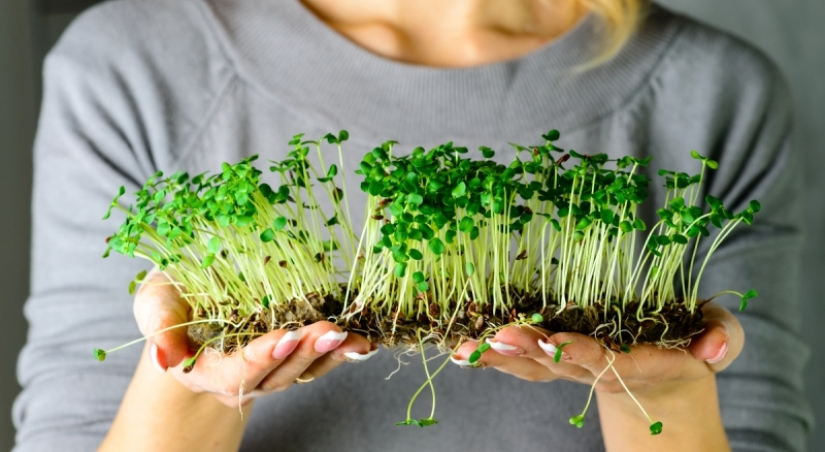
Many believe that microgreens are the product of the future. It can be obtained from almost any edible plant. Among the advantages of microgreen, it is especially worth noting that it grows in isolation from the environment, therefore it is environmentally friendly.
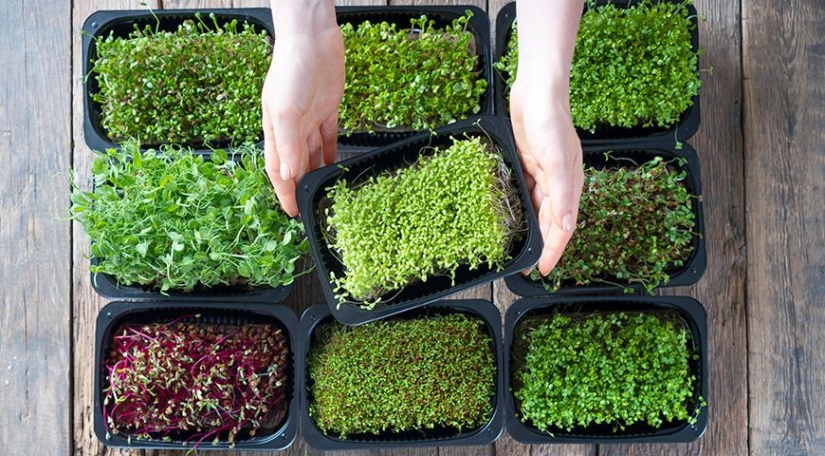
The first 10 days of life, plants do not have time to accumulate toxic substances that are inevitably contained in water and the atmosphere. At the same time, science has proven that sprouts contain 100 times more nutrients than raw vegetables grown in a field or greenhouse.
Beta-carotene, vitamins B, C, K and E, potassium, calcium, phosphorus, sulfur, magnesium, iron, iodine - this greenery has everything the human body needs to maintain health and good shape. Regular consumption of microgreens is known to prevent blood clots, heals hair, skin and nails, promotes the formation of new blood cells and simply boosts immunity.
Almost all crops are suitable for microgreens. It can be legumes, vegetables and cereals. The only exceptions are nightshade, that is, tomatoes, zucchini, peppers and potatoes. It is not recommended to germinate them due to the high content of solanine. This substance is a plant poison, harmless in small quantities, but can cause intestinal upset.
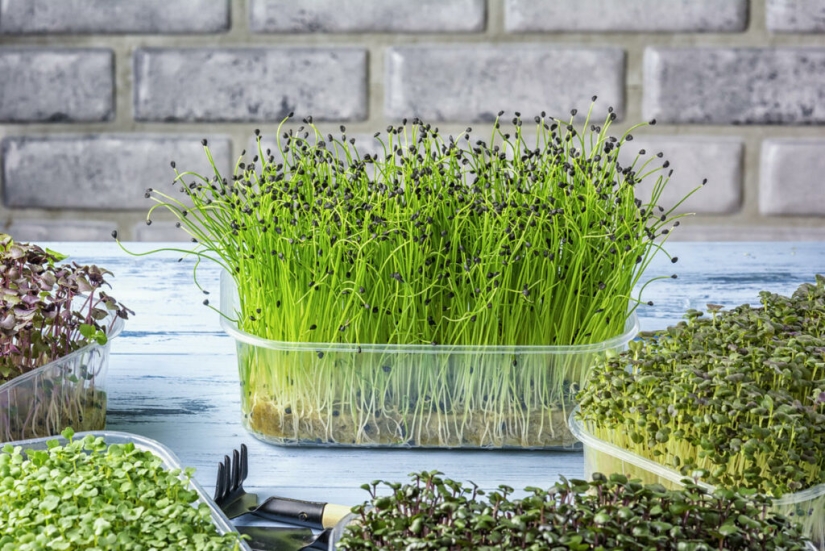
It is also not advised to experiment with pumpkin. Her microgreens contain a huge amount of nutrients, but, alas, there is a big minus. Pumpkin greens are very bitter and are unlikely to be enjoyable to eat. It is important to remember that only environmentally friendly seeds can be germinated. Those sold in gardening stores are not suitable. They are treated with various substances that increase germination and protect against diseases.
Microgreens of different crops may not differ too much in appearance. However, the taste will be very different. Plant sprouts are similar in taste to mature fruits, but have a more delicate and rich range. Sunflower, corn, and peas are sweet, while mustard, onion, and cilantro are savory.
Unfortunately, sometimes microgreens are not good for a person. An allergy to certain cultures is considered a contraindication. Parsley and spinach are considered record holders for intolerance. Due to the large amount of essential oils in sprouts, they can cause skin rashes in allergy sufferers.
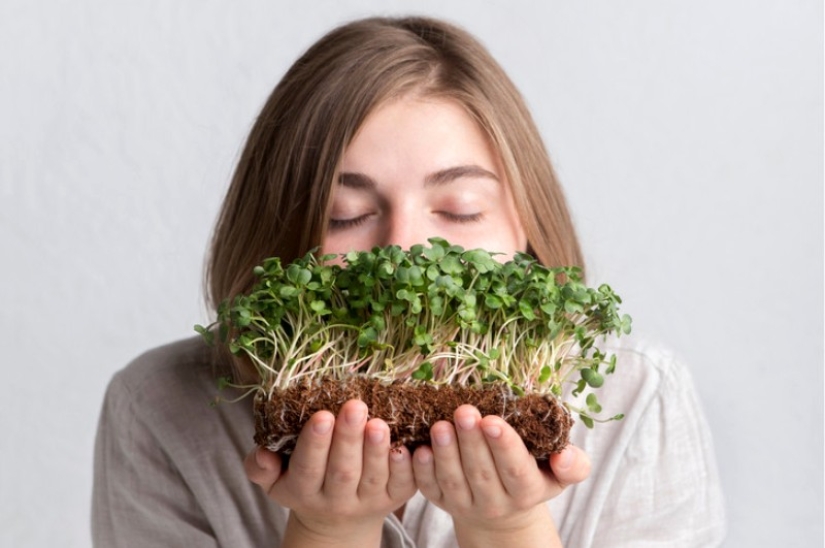
Peas, cabbage and chickpeas are contraindicated for those who have a weak stomach and intestines. They cause swelling. With increased acidity, it is better to forget about mustard, sorrel and onions. But, fortunately, the choice of microgreens is so large that everyone can find greens for their taste and health. Of course, if you are unsure of your knowledge, it is best to seek advice from a doctor or dietitian.
Anyone can grow microgreens at home. This does not require any knowledge of agricultural technology, or special equipment, or large areas. First of all, you need to purchase organic seeds. This can be done in specialized health food stores, which are now available in every city. Many people prefer to stock up on seed material in online stores.
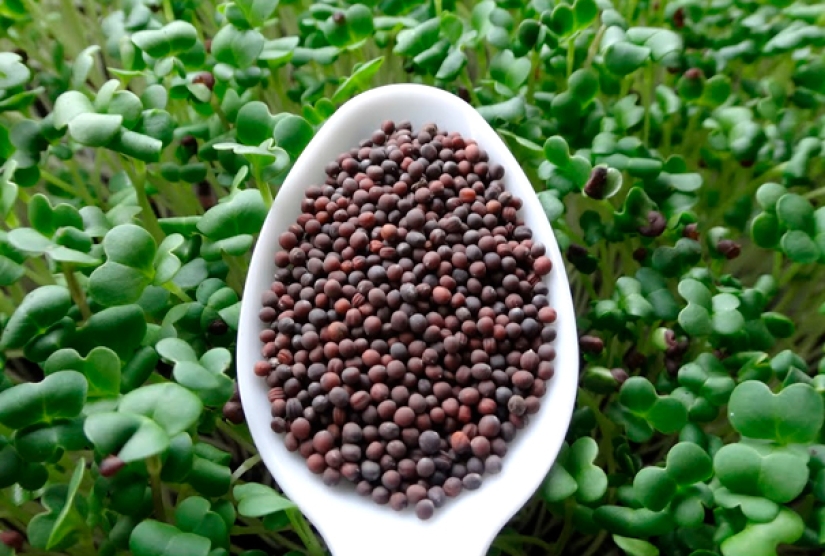
Do not forget that you cannot mix organic seeds with ordinary ones. Due to the dense planting, even one sprout treated with chemistry is able to “infect” the entire crop. Some seeds are soaked in water for several hours before planting. This procedure is not suitable for all crops. Arugula, flax, basil, watercress and chia do not tolerate “water treatments” well and are best planted immediately.
The place for growing microgreens should be well lit for at least 6 hours a day. If natural light is not enough, you should purchase a special lamp for seedlings. In this case, it must be turned on for at least 12 hours. A window sill located on the sunny side of the house is ideal as a mini-garden.
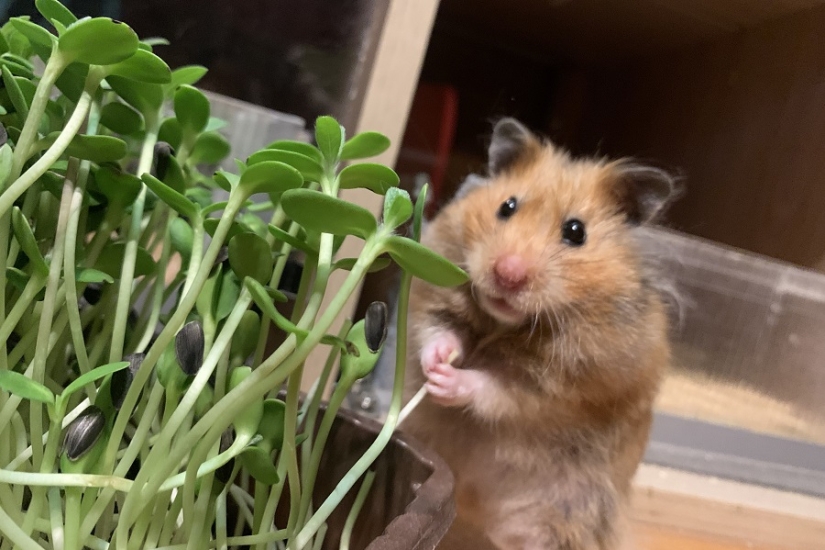
The temperature regime is also important. Many people think that the warmer the room, the better. But it is not. Microgreens need a temperature in the range of +18 to +24 degrees Celsius. If it is warmer or colder, then the seeds may not sprout.
There are many ways to grow microgreens at home. It is much easier than growing a lemon or passion fruit at home. Sprouts are obtained on towels, in the ground, in different containers. In specialized stores, you can even buy special germinating devices. But many do without them, using ordinary glass jars.
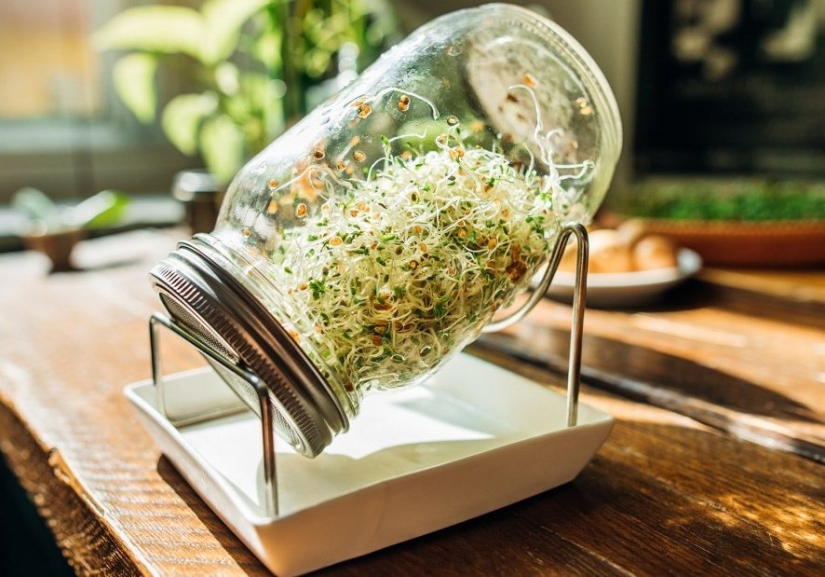
Seeds need to be poured into a container and poured with a small amount of water. The neck of the jar is closed with gauze or cloth, which is fixed with an elastic band. After that, the seeds are monitored so as not to miss the moment when sprouts appear. After that, the water is drained.
Sprouted seeds are carefully removed, washed under running water and placed back in a jar. The container is set at an angle of 30 degrees so that excess moisture flows down from the seeds. Seeds need to be washed daily so that they do not become covered with mucus. 10-14 days after the first sprouts appear, you can harvest microgreens.
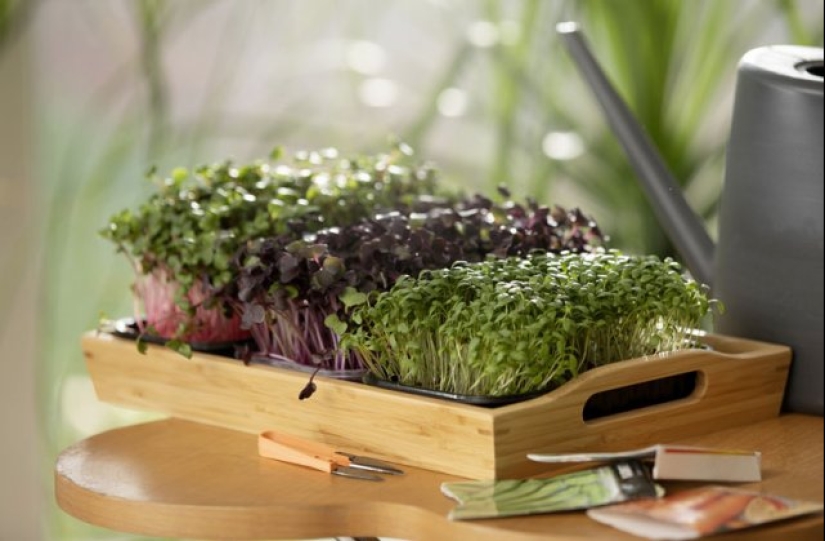
Growing microgreens in soil is even easier. To do this, the seeds are laid on the ground in a wide, but shallow flowerpot. It is important that the distance between them is at least 3 mm. On top of the grain sprinkled with a thin layer of soil and watered. Such a mini-garden needs to be sprayed from a spray bottle several times a day. This should be done carefully so that the soil is slightly wet, but does not turn into a swamp.
Recent articles

In the fall of 1972, Bill Yates traveled through the countryside in the vicinity of Tampa, Florida. At that time, he was studying ...

Severe cold weather does not give up its positions. We offer you to admire the magical photos of winter Europe, because snow and ...

Vladimir Lyubarov is an artist from the countryside who paints pictures of real life. But he brings amazing characters, birds, and ...